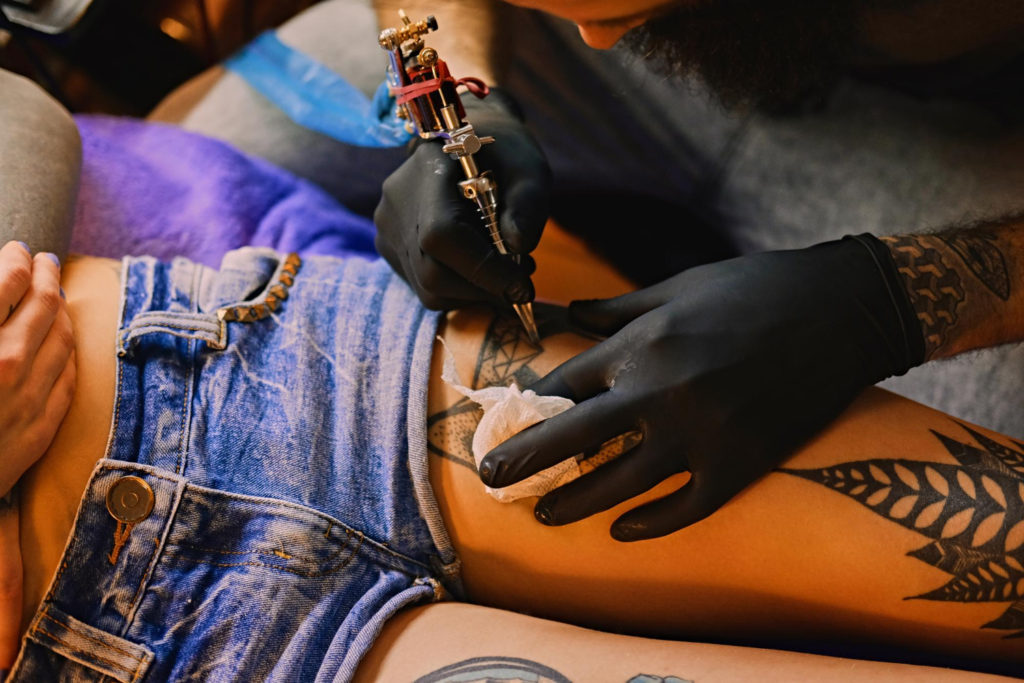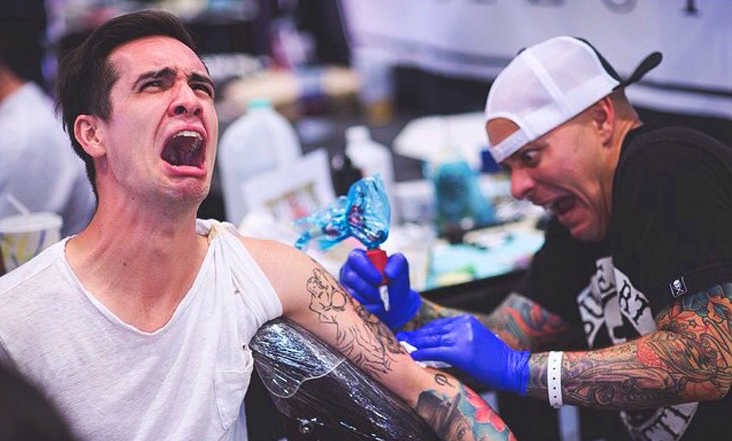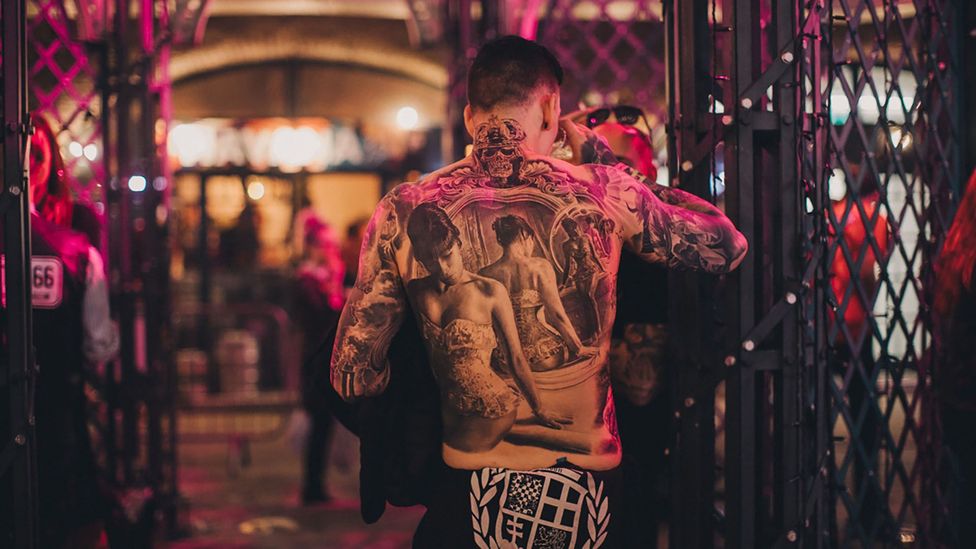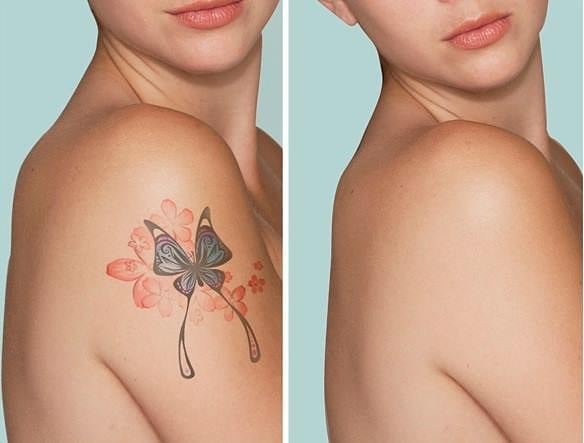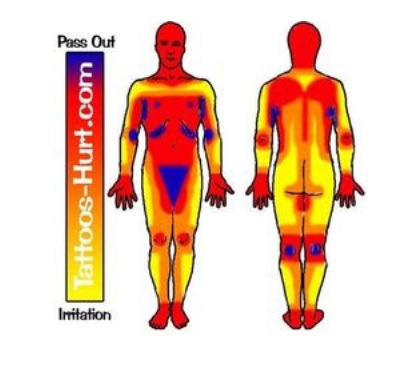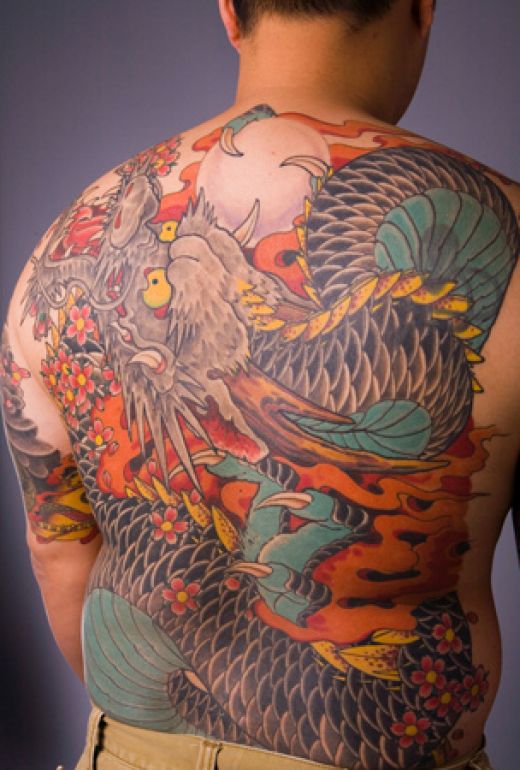Not everyone can sport highly visible tattoos. There may be many reasons for this, but the fact remains that some people would prefer to have less-visible tattoos. So naturally there’s an increase in interest for white ink tattoos and UV tattoos. These are tattoos that use near-invisible ink to give the wearer the satisfaction of having a tattoo without it being easily visible all of the time. Learn more about the pros and cons of white ink and UV tattoos, as well as some important facts you should know before you get one.
White Ink Tattoos
If you haven’t seen them around town yet, you probably will soon. White ink tattoos are rapidly growing in popularity. These are tattoos that use only white ink. No black outline, no additional color. White ink tattoos are typically just outline. Most do not even include shading. They are often just script or simple designs (something like a sugar skull design at the most complex).
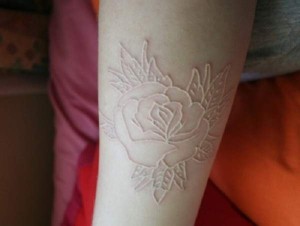
What should I know about white ink tattoos?
For those of us who aren’t tied to traditional or purist beliefs about tattoo art, white ink tattoos seem like yet another cool tattoo style. They certainly are interesting and there are plenty of skilled tattoo artists out there creating unique and beautiful works of art utilizing white ink. They’re sort of the tattoo art for people who aren’t keen on having visible or noticeable tattoos. We’ve seen some cool things done with the style, but there are some distinct drawbacks to white ink tattoos:

- They look like weird scars. Due to a lack of solid outline or any other color that might indicate that it’s actually a tattoo, white ink tattoos often look like scars or some sort of skin infection, particularly to people who might not know that you got tattooed, people who don’t know you, or people who are unaware of the existence of white ink tattoos.
- They won’t stay white forever. White ink tattoos, like white… well, everything, will show more than you want it to. Have you noticed how a tattoo’s color fades over time? That same effect can also cause yellowing over time (which can really make it look like a scar or infection. It’s a natural process caused by your body’s chemistry, but a pure white tattoo will show that a lot more noticeably than other colors.
- They take longer to create. Because it takes multiple passes to tattoo a white ink tattoo so that it will be visible at all, expect more time and effort to go into creating a white ink tattoo than you would expect for the same tattoo done in black.
- They fade quickly. Similar to the problem posed in the last bullet point, white ink tattoos fade quickly because all ink fades and if the white ink fades at all, then it is immediately less visible than a faded black tattoo. Either expect to get it retouched very often, or be prepared for it to not be as permanent as a traditional tattoo.
- They can be hard to see or invisible depending on your complexion. If you are fair skinned, odds are good that a white ink tattoo will barely be visible. The other downside is that unless you have darker skin, the redness that often accompanies healing tattoos will be incredibly noticeable against the white ink. Be prepared to deal with that.
Should I Get a White Ink Tattoo?
We wouldn’t tell you no, but it’s important that you know what you’re getting and that it isn’t as high quality of a product as a normally colored tattoo would be. Review the bullet points above and, if you can live with them, go for it. This tattoo style isn’t too different from lip or finger tattoos which also have a tendency to fade away after a time. It’s not a great investment, particularly if you’re getting a large white ink tattoo. That said, have fun and do what makes you happy. Just make sure that your artist is experienced in doing white ink tattoos. They aren’t super common yet and there are some key facts that your artist needs to know about the style before tattooing you to ensure your tattoo isn’t a total wash.
Want to even more to consider? Check out Buzzfeed’s white ink post which offers some visual pros and cons to white ink tattoos.
Should I Get a UV Tattoo?
A UV tattoo is typically invisible or nearly invisible in full daylight. The ink contains chemicals that react to ultra-violet light (UV light, commonly seen as blacklights) making them visible. These tattoos often appeal to those who want a tattoo that is less visible or invisible and so getting a tattoo that is only visible under UV light seems like a great prospect. The UV tattoo style is also popular in dance club and rave cultures which often offer the opportunity to be seen under UV or blacklight. The glowing effect is an especially unique and arguably cool effect, but of course UV tattoos have their down side as well. More Tattoo Designs:The New iPhone: Fanboy Tattoos

What to consider before getting a UV tattoo
Again, our aim is not to discourage readers from going out and getting UV tattoos. We just want to make sure you know what to expect and when getting a UV tattoo, there are some noticeable differences between them and traditionally inked tattoos. It’s worth having your potential artist for this kind of tattoo tell you as much as he or she knows about them partly to assess their knowledge on the subject, but also to make sure you know everything you need to know about this unusual tattoo style. Here’s some of what’s different about UV tattoos:
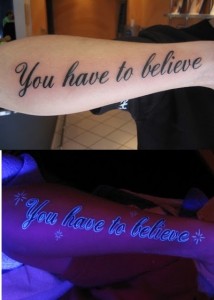
- Some UV tattoo inks claim to be FDA approved. This is false. No tattoo ink has been FDA approved. The ink may have been approved by the FDA for other uses such as labeling food, but it definitely has not been approved to be placed under your skin. Any ink making this claim should be considered suspect.
- UV tattoo ink hasn’t been around long enough to know the long term effects. We should clarify that we aren’t scientists or chemists, but chemicals that react to UV probably aren’t ideal to have under your skin long term. No studies have been done as this is a relatively new phenomenon, but we’d prefer to wait to get some solid scientific information.
- UV tattoos take longer to apply. It’s a much trickier process than traditional tattooing. It needs to be done under a blacklight and in order to make sure it shows up well, it’s going to take a couple passes to lay down the ink.
- Too much exposure to UV light can exhaust the reactivity of the chemicals. There’s a chance that your tattoo may one day cease to “work” under the blacklight–just like that glow in the dark star sticker collection you had on your bedroom ceiling as a kid.
- UV ink has a higher incidence of allergic reactions than black ink. But so does red ink. The two of them are known to be more prone to causing reactions. It’s early in the life of this new style, but the UV inks used in the process have previously held a reputation for causing problems–though they’ve made significant improvements in recent years. Have your artist start with a small spot that isn’t highly visible and then wait a week to see if anything happens. That way you’ll know and the reaction won’t be as bad as if you’d gotten the whole tattoo.
- The ink isn’t visible without UV light, but the scarring is. Similar to the problem with white ink tattoos, blacklight and UV ink tattoos will be visible, but won’t look like a tattoo. With a regular tattoo there is some slight scarring, but it isn’t very visible because the ink is opaque and camouflages the scars. UV ink is practically clear (with a very slight visible pigmentation), which means there will be a scar design instead of ink–at least until you’re under a blacklight.
So are these styles here to stay or just a fad?
It’s hard to say. Come back and ask us in 10 years. What we can tell you is that with the current technology and materials, these tattoo styles will leave you with an inferior product. You won’t have a strong tattoo that will last you a lifetime, but if you’re okay with that then there’s no reason to let us stop you. Just be a smart customer and ask the right questions and take the proper precautions.
Want a tattoo that will stick with you?
Read up on these styles and see if you don’t get some inspiration. These have both been tested by time and are cornerstones of the tattoo arts. Even better, that means it’s a lot easier to find an artist that specializes in one or both of these styles than one of the two styles we’ve discussed here. Regardless of what you choose, good luck and have fun!
